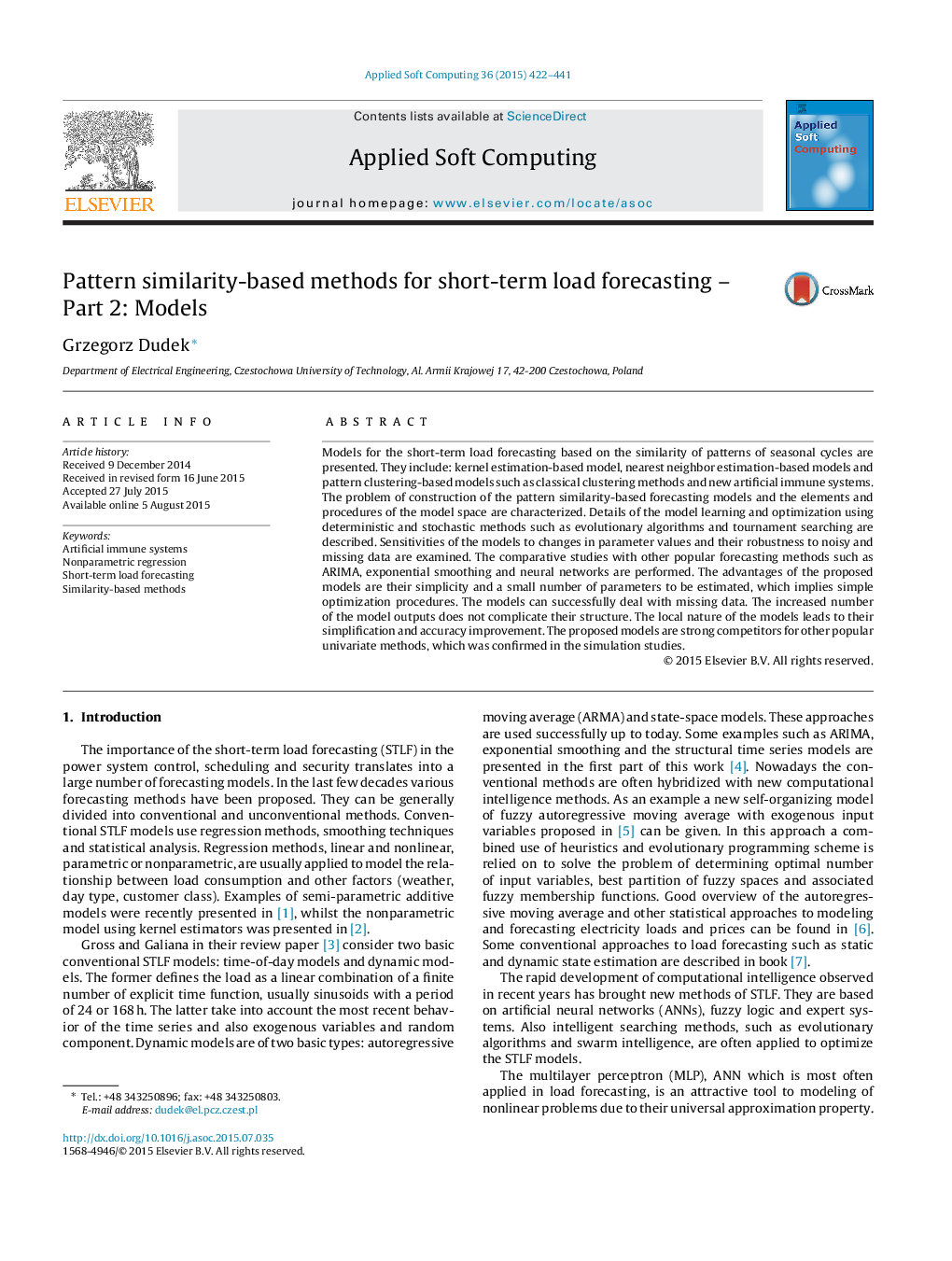| Article ID | Journal | Published Year | Pages | File Type |
|---|---|---|---|---|
| 494825 | Applied Soft Computing | 2015 | 20 Pages |
•STLF methods based on the similarity of patterns of seasonal cycles are presented.•Details of learning and optimization of the models are described.•Sensitivity and robustness of the models are examined.•Simplicity and a small number of parameters are the advantages of the models.•The local nature of models leads to their simplification and accuracy improvement.
Models for the short-term load forecasting based on the similarity of patterns of seasonal cycles are presented. They include: kernel estimation-based model, nearest neighbor estimation-based models and pattern clustering-based models such as classical clustering methods and new artificial immune systems. The problem of construction of the pattern similarity-based forecasting models and the elements and procedures of the model space are characterized. Details of the model learning and optimization using deterministic and stochastic methods such as evolutionary algorithms and tournament searching are described. Sensitivities of the models to changes in parameter values and their robustness to noisy and missing data are examined. The comparative studies with other popular forecasting methods such as ARIMA, exponential smoothing and neural networks are performed. The advantages of the proposed models are their simplicity and a small number of parameters to be estimated, which implies simple optimization procedures. The models can successfully deal with missing data. The increased number of the model outputs does not complicate their structure. The local nature of the models leads to their simplification and accuracy improvement. The proposed models are strong competitors for other popular univariate methods, which was confirmed in the simulation studies.
Graphical abstractFigure optionsDownload full-size imageDownload as PowerPoint slide
